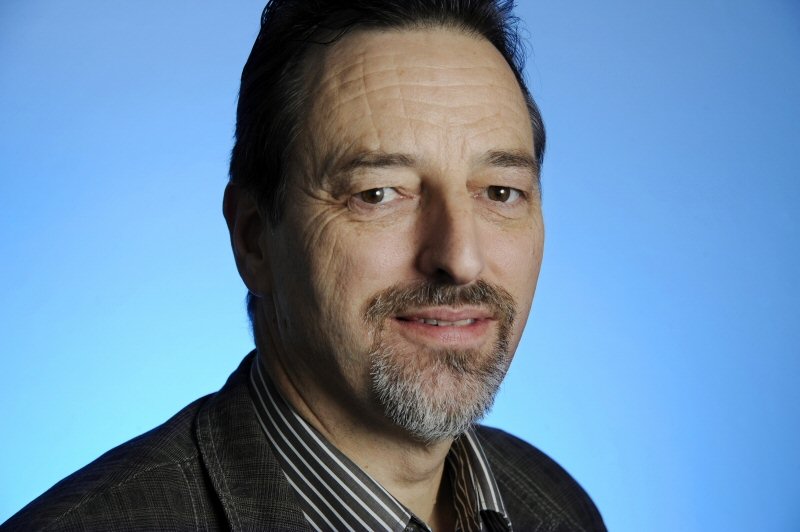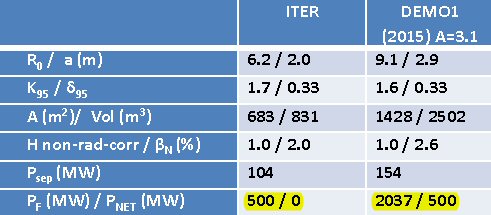26. ITER Page Disappears From EUROfusion Consortium Web Site

Tony Donné, EUROfusion program manager (Photo by Rob Stork)
Sept. 2, 2018 — By Steven B. Krivit
In November 2017, New Energy Times reported the EUROfusion organization’s publication on its Web site of inaccurate power claims about the International Thermonuclear Experimental Reactor (ITER). Two weeks later, the EUROfusion organization corrected those falsehoods. Five months later, in April 2018, during an overhaul of its Web site, EUROfusion removed its entire ITER Web page.
EUROfusion, like many organizations directly or indirectly involved in the ITER fusion reactor project, was grossly exaggerating the design capacity of the reactor. Among the inaccurate claims, EUROfusion said that, when complete, ITER would produce 10 times the power it would consume. In fact, the reactor will have a near-zero net power output.
The ITER page was one of the most prominent pages on the original EUROfusion Web site. Also, the page for the JET fusion reactor, ITER’s most direct predecessor, contained a description of ITER with an inaccurate power claim. That description was also removed during the site overhaul.
On April 27, 2018, New Energy Times asked Petra Nieckchen, the EUROfusion media manager, why the ITER page had been removed. Her response provided limited insight, despite a second attempt for clarification.
“ITER is not an experiment EUROfusion uses,” Nieckchen said. “It is an experiment we support.”
A page on the EUROfusion site that refers to ITER is titled “ITER Physics” and is listed under the “Programme” menu section. However, that page does not say anything about ITER. Instead, it provides information about other fusion research devices that EUROfusion says will provide supporting scientific knowledge for ITER. In the menu on the revised EUROfusion Web site, under the list of fusion devices, ITER is not listed.
New Energy Times asked Tony Donné, the program manager for EUROfusion since its inception, why his organization is no longer providing information about the ITER fusion reactor.
“We are not responsible for designing and building ITER,” Donné wrote. “That is the ITER organization. As EUROfusion, we are doing research in support of ITER. We didn’t receive money to build ITER, and there is no reason why we need to report on this; ITER should and does.”
Yet, according to this Oct. 9, 2014, European Commission press release (PDF), the EUROfusion Consortium was established and initially funded with €850,000 by the European Commission with ITER as a key component:
Success of key infrastructure – ITER (with support of JET) – ITER is the largest fusion reactor currently under construction in the South of France in Cadarache. It will be the first magnetic confined fusion device which will produce more power than put into it (it is expected to provide 10 times more power than put into it).
Also, according to this August 2016 EUROfusion brochure (PDF), the consortium was formed with ITER at “the heart of this collaborative agreement.” The brochure says that “EUROfusion’s work is structured around [a document called] the ‘Roadmap to the Realisation of Fusion Energy,’ which places ITER at its core.” It says that, “because ITER is the key facility of the EUROfusion roadmap, the consortium allocates considerable resources to ITER and its accompanying experiments.”
Donné denies that there is any discrepancy between the EUROfusion consortium’s new lack of information about ITER and EUROfusion’s founding mission. He explained it this way: EUROfusion directly supports various European fusion research devices that are intended to provide support for ITER, once operational.
“EUROfusion is not in any way involved in the procurements and manufacture of ITER. Instead we are preparing for the operation phase of ITER,” Donné wrote. “This supporting research makes up a large part of the EUROfusion research portfolio, but should not be seen as direct involvement in the building of ITER.”
As the Oct. 9, 2014, European Commission press release, quoted above, shows, EUROfusion was founded on the false claim that it would produce 10 times more power than put into it. Donné knows that is a false claim. His 2016 presentation (PDF) confirms that ITER will produce the equivalent of zero net power, if all goes well (see image below). The heat output will be 1.6 times the electrical input, but if converted (which is not part of the design) back to electricity, the net power output of ITER would be a loss.

Source: Tony Donné, Gianfranco Federici, “Overview of Design and R&D Activities Towards a European DEMO”
Only a few remaining Web pages on the EUROfusion Web site make any claims about ITER. One is in the FAQ section. On Aug. 21, New Energy Times advised Donné that the page contained multiple misleading statements. Donné fixed almost all the problems on that page within a week. (Original Page / Revised Page)
The only remaining main Web page on the EUROfusion Web site that makes a claim about ITER is its “Fusion on Earth” (PDF) page, which says, “Once operational, ITER will demonstrate the feasibility of fusion as an energy source.”
New Energy Times asked Donné how, in his opinion, ITER will demonstrate the feasibility of fusion as an energy source if it will produce the equivalent of zero net power.
“ITER will do all the necessary tests of the plasma and various subsystems such that, at the end, after successful tests, we can say that it is feasible to build a fusion electricity plant,” Donné wrote.
In other words, according to Donné, ITER won’t demonstrate the feasibility of fusion as an energy source. Instead, it will be feasible — to him — to build another experimental reactor, even larger, after the $22 billion ITER completes its tests.

